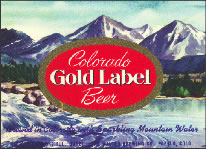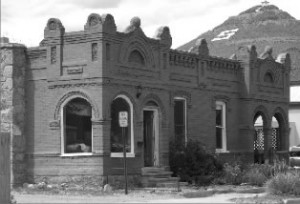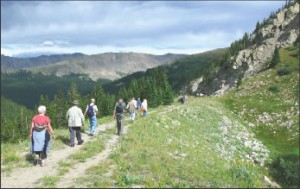by George Sibley
Colorado’s “Water for the Future Act” is now going into its fifth year. Is it working?
Well, I am betting that most Coloradans who read that paragraph will say, “Huh?” “Colorado’s what?” This could be taken as a measure of the extent to which the “Water for the Future” process is not working, not yet anyway – in part because it involves “water”, which we are all aware of needing, but which we have all been sort of psychologized to tune out on when someone brings up the technical, legal or legislative underpinnings of our water systems. “That’s too complex for us citizens to understand.”
I think this makes it what we called in 12th grade, back in the Fifties anyway, a “Problem in Democracy.” Or maybe it isn’t. Maybe it isn’t important for “we the people” to understand how we develop and distribute the most essential resource in the West. That’s what we have water experts for, right?
But if we buy into that argument, we have to acknowledge what it does to our conception of ourselves as “the world’s greatest democracy.” Our leaders often seem to speak of democracy as an American brand that we are franchising to the rest of the world (with a little gunboat diplomacy if necessary to get them to sign on). But we are pretty relaxed when it comes to definitions and descriptions, and if pinned down to define what “democracy” is in America, we would probably just fall back on a Humpty Dumpty definition: it is whatever we say it is, which is whatever we happen to be doing politically.
I think it wouldn’t hurt for us to try to think this through a little more thoroughly. I think most of us would concede that whoever controls the systems whereby the people live, controls the people. And further: if we do not understand the systems whereby we live, then we cannot control the systems, and have ceded control over ourselves to the people who do understand, develop and operate the systems. This makes it difficult for a large, complex hydraulic society to be governed democratically – by the people as well as, allegedly, for the people.
“Hydraulic society” is an academic name for a human culture whose viability is grounded on its ability to move water around – to spread water on dry lands to grow its food, to collect water for concentrated populations. The cultural phenomena we call “civilizations” have disproportionately grown up in subtropical and tropical desert regions, around mountain-born desert rivers that have become inextricably woven into the destinies of those civilizations and their cities – a pretty accurate description of 20th century civilization in the American Southwest.
Because a great deal of highly organized and often complex work is involved in moving water out of rivers and onto crop lands or into other water systems, the political structures of hydraulic civilizations have tended to be hierarchical, top-down, and not very democratic at all. The trenchwork in such systems was historically done with slave labor, while “knowledge elites” created and ran the systems. In our “most civilized” water systems – the biggest, most expensive and most complex – we have replaced the slaves with machines powered by cheap energy, and the knowledge elites today are engineers, managers, accountants, lawyers and other professionals rather than the hierophantic priestcrafts of ancient Babylon. But the essential political structures for the great and growing cities of the Southwest today is otherwise not much different from Babylon’s.
But somewhat overrun through most of the 20th century was a strong streak of what might be called “hydraulic democracies”: water systems truly created by and for the people who continue to run them in many western places outside the cities – places like Central Colorado.
When democratic Americans began to move into the arid and semi-arid high plains, plateaus and mountain valleys of the incongruous geopolitical rectangle called Colorado, where some form of hydraulic society was necessary anywhere below 8,000 feet elevation, many, maybe most, of them were in some degree of retreat from the plutocratic inequities of the Industrial Revolution “back east”. They knew that access to opportunity, that keystone of democratic society, required access to water, and that required a legal system that would prevent the plutocrats from coming in and buying up all the opportunity to sell back to the people at a profit.
The appropriations doctrine for water resources (like the Homestead Act for land) emerged out of that awareness: it allowed anyone to appropriate as much water from the commons as he or she needed to create a farm, a manufactory or whatever – but only that much. No one could own a right to use water that he or she was not putting to actual “beneficial use”. The appropriations doctrine permitted no speculation. Volumes have been written about the ways in which the plutocrats managed to get around these principles, but the underlying intent of the appropriations doctrine was democratic: protecting access to the water for as many people as the water supply would support.
At the same time that the appropriations doctrine was emerging out of the agrarian communities and mining camps of the West, John Wesley Powell, the great river explorer, geologist, ethnographer, and “Jeffersonian” political visionary, was trying to get Congress to adopt a community-oriented program for the settling of western lands, with settlers developing new lands in groups of up to a dozen families, working together to share out the irrigable and non-irrigable lands, construct irrigation systems, et cetera. He also wanted water rights to be attached to the land the water served, so that water sold off the land would lose its seniority.
He was eventually shut down by the plutocrats for these radically democratic ideas – but meanwhile, much of the West was being settled in exactly that way, either by groups of settlers that came to a place together, or by people that organized themselves into “ditch companies” after they got here, not because “it was the law” but because it made sense. Practically every agricultural ditch company in Colorado is a micro-democracy, still run by and for the people on the ditch. The appropriation seniority system of “first in time, first in right” may be adhered to between ditches and between watersheds, but “intra-ditch”, senior water users seldom call junior users in dry times; everyone on the ditch usually shares whatever water is available. (This begins to break down when land gets converted out of agriculture to real estate).
Meanwhile, however, other hydraulic societies were growing up in the midst of these little micro-democracies – fast-growing urban concentrations that the hierarchs of Sumer or Babylon in the ancient world would have recognized. By the turn of the 20th century, these “cities of the plain” were clearly outgrowing their local watersheds. Early in the 20th century Los Angeles Water and Power infamously reached out into a remote “hydraulic democracy” in the Owens Valley and effectively dried up a large part of it to supply the growing metropolis, and by the middle of the century, most of the major cities in the southwest were reaching out into adjacent and even more remote watersheds for water to either appropriate or buy outright for their burgeoning populations. (Despite local rhetoric, very little of that water has actually been “stolen” like the Owens Valley water was.)
The federal Reclamation Service was created at the turn of the century to bring the wealth of the nation to bear on aiding the struggling “hydraulic democracies” of the West – but by the 1930s, it was the Bureau of Reclamation with a focus on massive basin-wide river reconstructions to feed and water the great and growing cities.
And the whole process of water development for the cities was no longer “democratic” in any rigorous sense; it may have been “for the people,” but it was no longer “of the people.” Water development had passed into the hands of engineers, hydrologists, managers, huge construction companies, and water lawyers, trained and specialized experts all. In a word, technocrats, knowledge elites. The urbanization of the West replaced the hydraulic democracy of the ranch or mining community with the technocracy – de facto governance by the experts who knew how to build and operate the vast complex systems that supported the city.
Is this necessarily bad? Pragmatically, it was just necessary. A handful of farmers and ranchers could meet and come to a group consensus on how to improve or expand their ditch, but it was highly impractical for a city to put necessary improvements or extensions up for a plebiscite. An unwritten contract exists in a technocracy: so long as water comes out of the faucet or light out of the lightbulb, we the people will leave the technocrats alone.
So what happens when the big urban technocracy has to reach out for more water? In a situation where there is really no new water to appropriate, only already developed water to buy, borrow or beg – most of that in the little “hydraulic democracies”? Stay tuned; we’ll look at that potential train wreck next month.
George Sibley was born in Western Pennsylvania, but was conceived in Colorado, by Colorado natives, and thus considers himself to be a native Coloradan.


